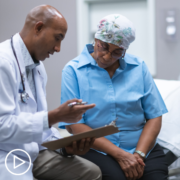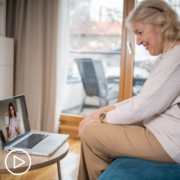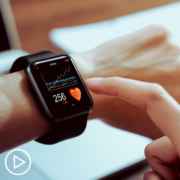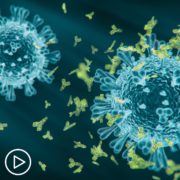MPN-Related Complications | Are BIPOC Patients at Higher Risk?
MPN-Related Complications | Are BIPOC Patients at HIgher Risk? from Patient Empowerment Network on Vimeo.
Are BIPOC myeloproliferative neoplasm (MPN) patients at higher risk of MPN-related complications? Expert Dr. Idoroenyi Amanam from City of Hope explains risk factors for MPN-related complications and proactive questions to ask your doctor.
[ACT]IVATION TIP:
“If you have a myeloproliferative disorder, I would want you to check with your doctor if you have a risk or you do have diabetes or high blood pressure, high cholesterol, and if so, how can you improve that diagnosis in order to decrease your risk or complications related to your MPN.”
Related Resources:

|

|

Bone Marrow Registries | What Myeloproliferative Neoplasm Patients Should Know |
Transcript:
Lisa Hatfield:
Dr. Amanam, what risk factors put the Hispanic and/or the Black population at a larger risk for MPNs?
Dr. Indoroenyi Amanam:
Yeah. So conventional risk factors such as atherosclerosis, high blood pressure, high cholesterol, diabetes, and smoking. We do know that in studies that those factors, potentially put you at higher risk for complications that are associated with myeloproliferative disorders. And we also know that, and, for example, if you’re an African American male, two in five African American males have high blood pressure. And when we look at all comers in the United States, only about a third of people have high blood pressure. So in that setting alone, we know that if you have high blood pressure, you have a higher risk for these complications-associated MPNs. And we know that African American males have a higher risk for that, so I think those things are…that example is a clear indicator that really identifying these basic risk factors that are related to diet, exercise, your weight, and other behavioral, possibly behavior-related factors may put you at higher risk to have complications from MPNs.
So, Hispanics, for example, have you twofold, they’re twofold higher risk to be diagnosed with diabetes than Caucasians. So that’s another example. And so I would say for MPN, that’s actually low hanging fruit. That means we don’t have to give you a new therapy or a MPN-related therapy. We can help you by improving your diet. Really giving counseling for cessation of smoking, really, education related to physical activity and exercise. I do believe that those are modifiable risk factors that we can address. And MPN physicians or cancer doctors can help their patients by really educating them in that way.
Activation tip for this question. If you have a myeloproliferative disorder, I would want you to check with your doctor if you have a risk or you do have diabetes or high blood pressure, high cholesterol, and if so, how can you improve that diagnosis in order to decrease your risk or complications related to your MPN.
Share Your Feedback
Create your own user feedback survey




















